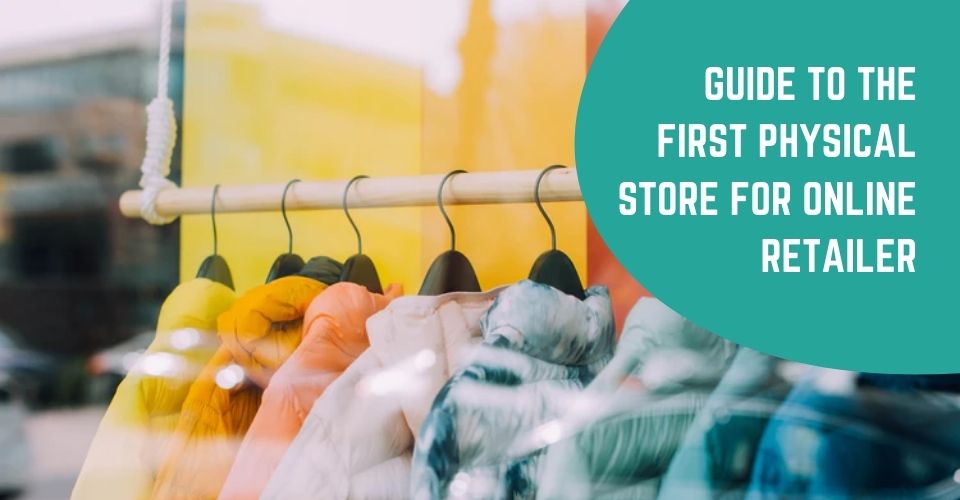As many e-commerce are opening brick-and-mortar stores as a way to build a stronger bond with their customers, offer them more shopping options and raise sales, you might start considering your own physical presence too. A physical store requires lots of time, effort and even money, so you need to carefully prepare for it. It’s better to have a checklist of things to prepare and below are some checkpoints that you must have on the list.
Overview
Location
More than often, location counts for the biggest part of your expenses when running brick-and-mortar stores so before making your decision, we strongly recommend that you spend time getting to know the area where you plan to open the shop, especially people who live or work there because they will be your frequent visitors. Then think about what you want to bring to your potential customers there via your physical stores: your products and services, of course, but what we want to emphasize is the experience: can the location make your vision of customer experience come true?
If you believe the answer is yes, it’s time to test the concept. Open a pop-up store first to see how things go and what needs to be improved. Ask your network if they or anyone they know can let you rent a small space, or you can use renting apps like AppearHere.co.uk to find spaces for your pop up stores at the best prices.

Store Locator
Your main source of customers right now is online, so make sure they know about your physical presence, whether it’s a pop-up store or a permanent store. If it’s a pop-up store, you can add a pop-up and a temporary dedicated page to your website and send out emails to notify your customers of your pop-up store. But in case its presence is more permanent, you need a Store Locator page that let people know where they can go meet you, experience the products and services and collect their in-store pickup items. We recommend that you have a dedicated page for Store Location(s) and place it on the top of your homepage (and make the page look clean and neat if you want to make good impressions), so it’s one of the first things the customers notice when they enter your website. Furthermore, Store Locator also helps with your rank in Google and drives local traffic to your physical location.
For popular e-commerce platforms (Magento, Shopify, WooCommerce, etc.), you can easily find Store Locator extension designed exclusively for each. For Magento, here’s the list of Store Locator extensions that you can take into consideration:
Point of Sale
POS system is a ‘must-have’, whether you open a pop-up store or a permanent store. And by ‘system’, we don’t mean the giant, complex one – it can start with a POS software (web app or iPad app) and POS hardware (receipt printer, cash drawer, and maybe a barcode scanner or you can use your iPad camera instead to save money – some POS enables this function).
Here are some tips to have a good POS system without spending lots of money along with time and effort:
►►►► Please visit our products: Woocommerce POS, Mobile POS, White label POS, Reseller POS, POS System for Retail and Vape Store POS
- Choose an integrated POS that connects to your e-commerce system, so the database and settings on your online store can be synchronized to your POS, enabling you to sell right away without having to set up everything again in POS or paying extra money to connect them. A synchronized system between POS and eCommerce website will benefit you lots, from better experience for your customers, integrated functions (such as Reward Points and Gift Cards available both online and offline) to central business management.
- Choose a POS software first, and look up which hardware is compatible with it. Some POS software work with a wide range of POS hardware peripherals but better be sure than sorry so just go to the website and check.
- Register for a free trial and demo, but come prepared with a list of functions you think you’ll need: accept orders and payments, of course, but what about using different payments in one order, taking a deposit, refund or exchange? Think about what your customers have done, what you offer in your purchase policy and draft the necessary feature list.

Bonus Point: Integrated Payments and Inventory Management
Integrated Payments allow you to accept payments quickly and minimize cashiers’ error in entering the amount to charge. The process to apply for a merchant account may take some time, but it’s worth it.
Also, since this is your first store, you may not think about multi-warehouse inventory yet. But if you’re ambitious with your plan, make sure this feature is available or can be integrated with your POS. Or maybe you can opt for an ERP extension – this will help you with the purchase order management (now) and multi-warehouse inventory (in the future).
*ConnectPOS is high-speed Point of Sale software for Magento. It is compatible with Magento 1 and Magento 2 and works well with many hardware peripherals. ConnectPOS has many functions that cover daily needs of your shop and is integrated with Reward Points, Gift Cards and Multi-warehouse Inventory. ConnectPOS is available in web app and iPad app.
Final Word
Brick-and-mortar stores can complement their online business and reinforce your brand position in target customers’ minds. Many studies point out a larger portion of customers still prefer shopping in store and about 70% of the retail revenue comes from this sales channels. So if you’re preparing for your store, prepare the best you can for the leap to get the most out of it. We wish you all the luck with your business!
